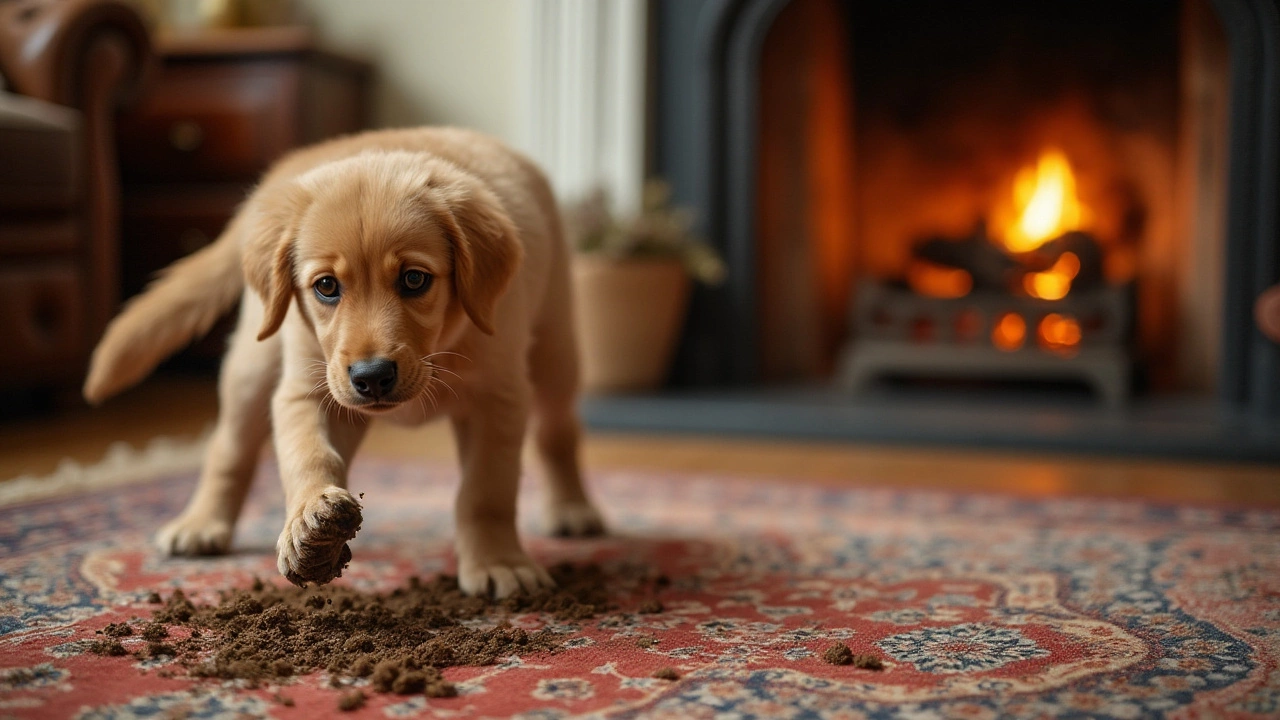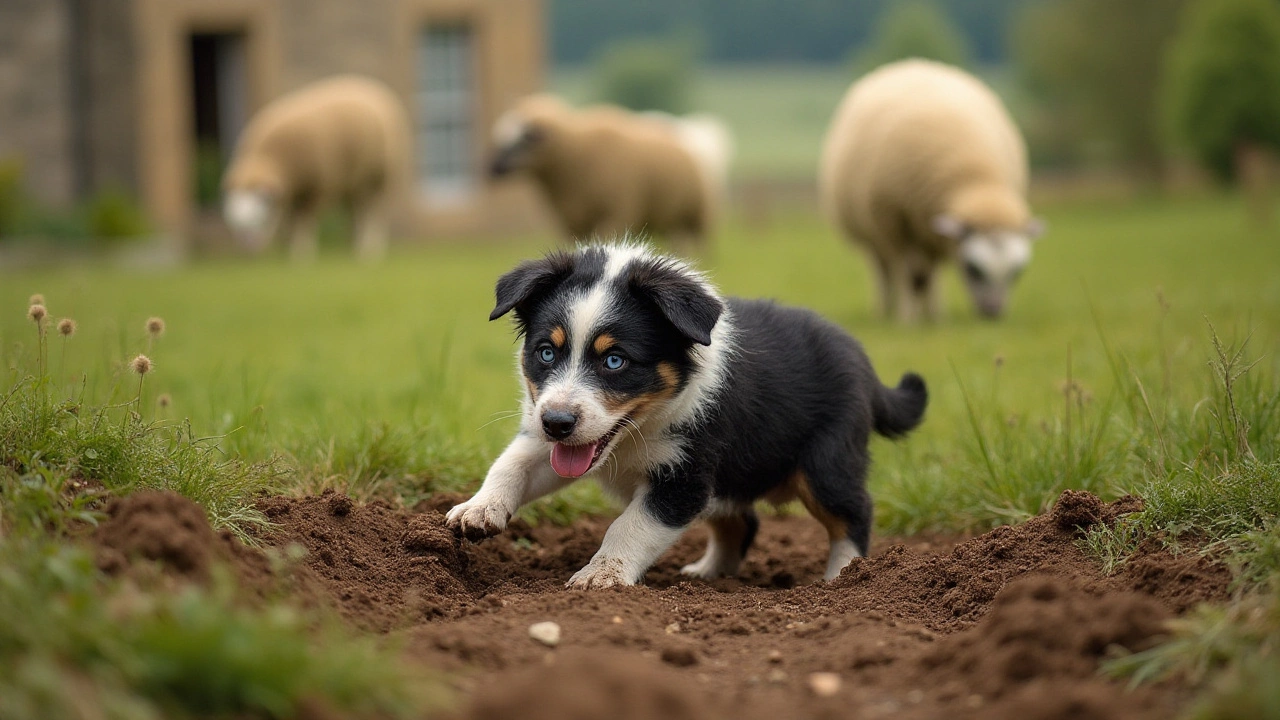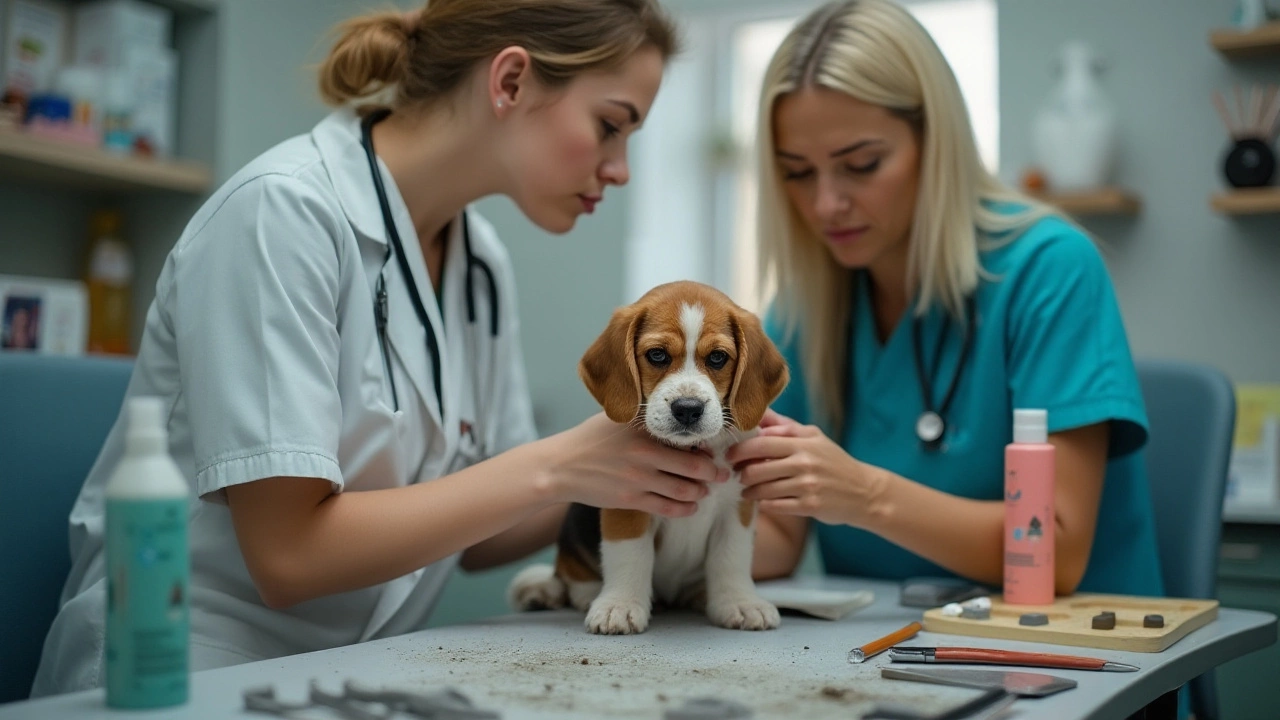In the joyous chaos of raising a puppy, many pet owners are familiar with the term 'Dirty Dog Syndrome.' This quirky phrase refers to an all-too-common phenomenon where no matter how often you groom your puppy, it always seems to find a way to get grubby once more. While it's part and parcel of puppyhood to get a bit dirty from time to time, there are steps you can take to reduce the frequency and intensity of these messy escapades.
Within this article, we'll delve into what exactly Dirty Dog Syndrome is and explore a handful of practical reasons why your puppy might keep returning to its untidy state. Whether it's due to environmental factors, inherent skin conditions, or perhaps even its lively temperament, understanding these possible causes is the key to managing them effectively. With some tried and tested grooming tips, along with preventative care strategies, you can help your playful pup enjoy everything life has to offer without wearing the evidence on its coat.
- What is Dirty Dog Syndrome?
- Common Causes of Dirty Dog Syndrome
- Effective Grooming Tips for Puppies
- Preventive Measures and Health Care
What is Dirty Dog Syndrome?
Many new puppy owners find themselves confounded by what seems like an endless cycle of dirt and mess when it comes to their furry companions. This phenomenon, whimsically dubbed Dirty Dog Syndrome, is not an official medical condition but is instead a descriptive term used by exasperated pet owners and experienced groomers alike. It refers to the perplexing but common occurrence where puppies appear to attract dirt and grime more readily than one might expect. Understanding the root causes behind this condition is crucial for maintaining not only the cleanliness of your home but also the health and well-being of your pet.
Several factors contribute to this muddy conundrum. Puppies, by nature, are curious creatures with a strong desire to explore their surroundings. This curiosity often leads them into dirt, grass, and sometimes more unsavory areas. Additionally, puppies may have softer hair and more sensitive skin compared to older dogs, making them more prone to appearing dirty. It's important to distinguish between simple dirt accumulation and potential underlying skin conditions that might require medical attention. Veterinarians often advise regular check-ups to rule out any dermatological issues that could be exacerbating the syndrome.
Environmental factors also play a significant role in how often a puppy needs a bath. Living in a rural area versus an urban setting can drastically change the frequency and type of dirt your puppy encounters. Those residing near the ocean may deal with salty, sandy pups, while urbanites might find themselves scrubbing pollutants or city grime from their pet's fur. One interesting tidbit comes from a study published in the Journal of Animal Science, which notes that puppies exposed to diverse environments showcase stronger immunities but also carry a higher likelihood of appearing "dirty."
"Puppies are little dirt magnets for a reason—it’s part exploration, part nature, and a tiny part of just being who they are," shared renowned veterinary dermatologist Dr. Emily Anders during a 2023 pet care conference. This perspective sheds light on the behavioral aspects tied to Dirty Dog Syndrome, encouraging owners to embrace the playful chaos while managing it effectively.
Behavioral characteristics specific to breeds can add another layer of complexity. Breeds like beagles or retrievers, known for their active and exploratory nature, might dive headfirst into things that leave them dirtier than less active breeds. Recognizing this trait in your puppy can quell frustrations by setting realistic expectations about grooming needs. A routine that complements their lifestyle will go a long way in mitigating the stress associated with perpetual dirtiness.

Common Causes of Dirty Dog Syndrome
Every pet owner, especially those with boisterous young canines, is likely to encounter the amusing yet somewhat exasperating phenomenon known as Dirty Dog Syndrome. While it may seem like an eternal battle against the odds to keep your puppy smelling fresh and looking spotless, understanding the reasons behind their perpetual dirtiness is crucial. One major contributing factor is simply the puppy's natural exuberance. Puppies are inherently curious, often exploring their world with all senses engaged, leading them to roll around in dirt, splash through puddles, and sniff out every inch of their surroundings. This fervor for exploration inevitably results in coats that seem to collect debris as though it were a hobby.
In addition to their adventurous spirit, environmental factors play a significant role. Puppies living in areas with a lot of rain or those that are naturally muddy will tend to get messier more quickly. If your playful pup's favorite outdoor afternoon destination is a local park or a countryside area teeming with mud and foliage, expect frequent grooming to become an integral part of your routine. Seasonal changes, too, can exacerbate this issue, with autumn leaves and spring pollen creating additional sources of dirt and allergens that might cling to fur.
An often overlooked but important aspect of Dirty Dog Syndrome is related to a puppy's skin and fur health. Some dogs naturally produce more oils, which can lead to their coats attracting more dirt than average. This increased oil production can be due to breed-specific characteristics or individual health variations. If a puppy exhibits signs of a skin condition, such as persistent itching or redness, the resultant scratching can cause oil and dirt to spread easily across the skin and fur. In extreme cases, this might warrant consult from a vet to rule out any underlying issues.
According to Dr. Emily Watson, a professor of Veterinary Dermatology, "puppies with naturally oily coats or those with certain dermatological conditions are more prone to attracting dust and dirt particles, which exacerbates their scruffy appearance." Paying heed to these conditions means not only recognizing them but effectively addressing their root causes through dietary adjustments, special shampoos, or appropriate veterinary treatments.
In a household environment, certain allergens and pollutants can contribute to making your puppy appear dirtier. Dust particles, human hair, and other common domestic contaminants might stick to the puppy's fur, especially if it's long or fluffy. Keeping these factors in check requires a clean environment, entailing regular house cleaning, washing of puppy bedding, and managing air quality. Taking these steps can substantially alleviate the nuisance of Dirty Dog Syndrome, ensuring a cleaner pet and a happier home.

Effective Grooming Tips for Puppies
Grooming a puppy is not just about keeping them looking neat and tidy; it's a vital part of maintaining their health and happiness. While some may see it as a chore, it's a fantastic opportunity to bond with your pet and ensure they're comfortable and clean. Puppies, much like young children, are bundles of energy and curiosity, leading them into all sorts of dirty escapades. To combat this, a consistent grooming routine is key. Start by brushing your puppy regularly to remove loose fur, dirt, and any insects they might pick up during their adventures. Puppies often have softer coats, which require gentle brushes to avoid any skin irritation. Keeping your puppy's coat in good condition also reduces shedding, a bonus for keeping your home a little less furry.
Bathing your puppy is an essential part of puppy care, but it's important not to overdo it. Generally, puppies should be bathed once every month to avoid stripping their skin of natural oils. Use a mild shampoo specifically formulated for puppies, as their skin is more sensitive than that of adult dogs. Additionally, make sure the water temperature is comfortable. A fear of water often develops if harsh experiences occur during these early stages, affecting how they view baths for the rest of their lives. Take your time, speak calmly, and ensure plenty of sweet rewards after each session to create positive associations.
Special Focus on Ears and Paws
Puppies' ears and paws are often neglected in grooming, yet they are some of the most crucial parts to maintain. Ear infections are a common issue in dogs and can be prevented by regular cleaning. Use a veterinarian-recommended cleaner and gently clean the outer parts of the ear, being careful never to stick anything into the ear canal. This routine should be done weekly to avoid any buildup of wax and debris. Similarly, paws are hotspots for dirt and potential injuries. Regularly trimming the hair around the paw pads can help keep them clean and prevent anything from sticking in the fur.
"The love of a dog is a pure thing. He gives you a trust which is total. You must not betray it." — Michel Houellebecq
Nail trimming is another crucial part of the grooming process. Long nails can cause discomfort and even lead to health issues as they alter your puppy’s natural gait. Investing in a good pair of nail clippers and learning the right technique is essential. If you are unsure, your vet or professional groomer can offer a demonstration or do it for you in the beginning. The sound of the clipper and sensation on their nails can be unsettling for puppies, so patience is paramount. Start with small snips and plenty of treats to make the experience positive.
| Grooming Task | Recommended Frequency |
|---|---|
| Brushing | Every other day |
| Bathing | Once a month |
| Ear Cleaning | Weekly |
| Nail Trimming | Every 3-4 weeks |
Lastly, inspecting your puppy's skin during grooming sessions can help you spot potential issues early, such as fleas, ticks, or rashes. Prevention and early detection are critical in maintaining your puppy's health. Emphasize regularity in grooming routines, as puppies thrive on consistency. You'll not only have a happy pet but also one that is eager and excited for the next grooming session. Remember, your puppy relies on you for its cleanliness and health, and with the right routine, you can ensure they're always looking and feeling their best.

Preventive Measures and Health Care
Taking a proactive approach to your puppy’s hygiene is crucial in tackling Dirty Dog Syndrome. This starts with understanding their specific needs. Just like people, dogs have different skin types and environmental interactions that can either help fend off or attract dirt. A common first step is to establish a regular grooming routine. Bathing your puppy every few weeks helps maintain a clean coat, but overbathing can strip natural oils, leading to skin issues. Using a puppy-friendly, pH-balanced shampoo is essential to avoid irritation, and always ensure it's thoroughly rinsed to prevent residue buildup.
An informal study by the American Kennel Club suggests that proper grooming not only keeps your puppy clean but also fosters a stronger bond between you and your pet. Brushing is a critical component, helping to remove dirt and loose fur. For breeds prone to hair matting, such as poodles and cocker spaniels, brushing might need to be a daily activity. Checking their ears and eyes for debris and regularly cleaning them will contribute significantly to their overall cleanliness and health. Clean ears can help prevent infections, while clear eyes reduce the risk of irritations that could lead to tears and stains on their fur.
Diet also plays a surprising role in reducing Dirty Dog Syndrome. A high-quality, balanced diet enhances skin health, making your dog’s coat more resilient to dirt. Including omega-rich foods like fish oil or flaxseed oil can enhance their fur's shine and strength. Ensuring your puppy has access to clean, fresh water at all times supports their bodily functions and keeps their skin hydrated.
Environment conditions are another area to consider in your preventive approach. Keeping your puppy’s living space clean is non-negotiable. Regular vacuuming and cleaning will minimize allergens and dust that can cling to their fur. If your puppy tends to dig or roll around, supervise their playtime outdoors and provide clean indoor play areas. It's also wise to use non-toxic cleaners, as puppies have a knack for licking floors and surfaces.
One of the lesser-known tips is to maintain their paws, especially when tackling Dirty Dog Syndrome. Dogs sweat through their pads, which can attract dust and cause dirt collection. Regular paw checks after walks can prevent dirt from spreading through your home. Clipping nails not only keeps their feet tidy but also prevents injuries associated with overgrown claws, which could inhibit your puppy's ability to move freely and comfortably.
Lastly, monitor your puppy’s overall health. Some recurring dirtiness can be a signal of underlying conditions such as dermatitis or allergies. If you notice persistent itchiness, redness, or other unusual signs, consult a veterinarian promptly. Addressing health issues early ensures your puppy remains happy and healthy.
"A healthy puppy is a happy puppy. Regular vet check-ups and being proactive with grooming and diet are the cornerstones of managing dirty dog syndrome," states Dr. Emily Greene, a renowned veterinarian and pet care expert.

